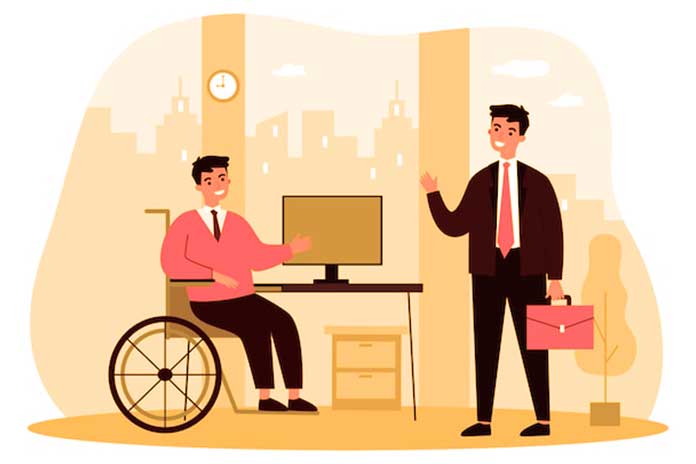Even though accessibility is being taken more and more seriously in a wide range of areas, people with disabilities still have to face numerous challenges in their everyday lives. This is often particularly noticeable in the workplace: people who depend on a disabled-friendly workplace need this to be able to fulfill their tasks. But what exactly does such a workplace suitable for the disabled look like, and what do entrepreneurs have to consider?
Table of Contents
Typical Barriers In The Workplace
It doesn’t matter what job or industry – disabled people face daily challenges that their superiors often don’t even have on their radar screens. Open communication and prudent behavior ensure that any grievances can be effectively remedied. But in addition to the small challenges that make everyday work more complex, there are other problems that disabled people are confronted with – often even when looking for a job. Because many existing buildings are getting on in years and are not designed for accessibility, job seekers with disabilities have to cross some jobs off their list.
Narrow corridors, the lack of elevators, offices that are too small and many other things mean that working suitably for the disabled is not even remotely possible. Some barriers, such as the lack of a lift, can be remedied quickly and effectively – for example, with a home lift and vertical lift. On the other hand, other barriers that result from the existing property can often only be removed under challenging conditions. However, if a company designates a workplace as barrier-free, some guidelines from the Disability Equality Act (BGG) must be observed and complied with.
What Does A Disabled-Friendly Workplace Look Like?
Disabilities are individual. Nevertheless, some points need to be implemented when it comes to accessibility in retail or other industries. Accessibility is a priority. All employees should be treated equally and be able to move freely in the workplace.
Disabled-Accessible Outdoor Facilities
A workplace suitable for the disabled begins in outdoor facilities. There should be accessible parking spaces near the entrance. These must be wide enough to allow the loading and unloading of a wheelchair. In addition, the building must be accessible without barriers. If the entrance is above street level, the height difference must be able to be overcome by a ramp or other modality.
Sanitary Facilities
The specifications apply to sanitary facilities if a company advertises handicapped-accessible jobs. There must be a sufficient number of disabled-accessible clean rooms. There are precise specifications for their size and equipment.
Wide Corridors
As soon as the company building has corridors longer than 15 meters, specific requirements apply to the width of these corridors. These must then be at least 1.80 meters wide so that two wheelchairs can easily pass each other. Doors must also be wide enough to avoid jamming successfully with the wheelchair. This policy also applies to elevator doors.
Ramps And Lift Systems
If differences in height have to be overcome in the building, the employer must provide appropriate facilities for persons with disabilities. A ramp is ideal for more minor height differences and a lot of space. If the height difference is too significant, 1.10mx 1.40m lifts or platform lifts must be installed.
Flooring
Companies with workplaces suitable for the disabled must also ensure that the floor covering is antistatic. It is, therefore, essential to use appropriate material around the desk and in turning bays.
The Workplace
While the points mentioned so far relate to the building itself, some specifications relate to the workplace – for example, the office and the desk of the person concerned. Desks should be height adjustable. In addition, filing and archiving systems should be designed so that people with disabilities can reach everything quickly and safely. Depending on the type and severity of the disability, employers must also provide work software suitable for the disabled.
What To Do If The Workplace Does Not Meet These Requirements?
Unfortunately, people with disabilities are used to making compromises. Nevertheless, it is advisable to address problems openly with the employer. Companies can even take advantage of state subsidies to ensure secure integration into working life. This way, any additional costs for workplaces suitable for the disabled can be covered. Even industrial workplaces can now be designed to be suitable for the disabled. A company with an equal opportunities officer is a good contact person.
Also Read: Disagreement In The Digital Workplace – IT Security Suffers


